Compensation is a complex and critical aspect of HR and talent management. In recent years, compensation has gained significant attention due to factors such as inflation, global workforces, and generational differences. To navigate this complexity and build buy-in for compensation strategies, organizations must develop a clear compensation philosophy, understand the components of total compensation, and effectively communicate their strategies. This article will explore these themes based on a recent Unmuted Podcast episode (ep #23) with guest, Deanna Brousseau; Director, People & Talent at Edmonton-based AltaML.
Watch the episode below. Note: feel free to subscribe to our YouTube channel so you are immediately notified when new Unmuted podcast episodes are dropped. Click here.
Key Takeaways
- A compensation philosophy is built on organizational goals and guiding principles, providing clarity on how compensation decisions are made and engaging high performers.
- Total compensation includes base pay, bonuses, benefits, work-life balance perks, and learning and development opportunities.
- When building a compensation structure, start with assumptions, review job leveling frameworks, gather market data, and align with organizational values.
- Communicate compensation strategies transparently, starting with alignment at the top, addressing retention issues, and providing high-level information to employees.
- The trend in compensation is towards more transparency and personalization, with employees seeking fair and open discussions about pay.
Building a Compensation Philosophy
A compensation philosophy serves as the foundation for an organization’s approach to compensation. It is built on the organization’s goals and guiding principles, providing clarity on how compensation decisions are made and ensuring the engagement of high performers. A comp philosophy should align with the organization’s values and address goals such as bringing clarity to compensation decisions and retaining top talent.
To build a compensation philosophy, organizations should start by identifying their assumptions about compensation and evaluating their current practices. This includes reviewing job-leveling frameworks, assessing market competitiveness, and considering the organization’s values. Deanna dropped several nuggets of wisdom – she emphasized the importance of aligning the compensation philosophy with the organization’s values to avoid any disconnect between stated values and compensation practices.
Understanding Total Compensation
While many people associate compensation with base salary, it is essential to consider the broader concept of total compensation. Total compensation includes not only base pay but also additional benefits and perks that contribute to an employee’s overall compensation package. Several components of total compensation include:
- Base pay: The foundational element of compensation, which includes the employee’s salary or hourly rate.
- Bonuses and variable pay: Additional compensation based on performance or other predetermined criteria.
- Benefits: Health and dental coverage, retirement savings plans, and other insurance options.
- Work-life balance perks: Flexible work arrangements, unlimited vacation policies, and transportation benefits.
- Learning and development opportunities: Mentorship programs, career development initiatives, and access to training resources.
By considering these components, organizations can provide a more comprehensive and attractive compensation package to their employees.
Learn how to implement employee well-being into your total rewards with our free guide.
Building a Compensation Structure
Building a compensation structure requires careful consideration of market data, internal alignment, and the organization’s goals. Brusso suggests starting with assumptions and evaluating the organization’s current job-leveling framework. This involves assessing whether the existing levels align with market standards and making adjustments if necessary.
To gather market data, organizations can utilize surveys and tools such as the Talent People Network (TAP) and Pave (there are many others). These sources provide insights into compensation trends within specific industries and help organizations benchmark their compensation practices. By leveraging multiple data sources, organizations can ensure they have a comprehensive understanding of market compensation.
When communicating the compensation structure, transparency is key. It is recommended to start with high-level information and gradually provide more details as needed. This includes explaining the organization’s approach to job levels, growth opportunities, and the use of compa ratios to determine individual compensation. By being transparent and providing clear explanations, organizations can build trust and understanding among employees.
Communicating Compensation Strategies
Effective communication of compensation strategies is crucial for building buy-in and ensuring employees understand the rationale behind compensation decisions. It’s important that senior leaders are aligned and they are engaging in an open discussion about compensation philosophy. This alignment sets the tone for transparent communication throughout the organization.
To communicate compensation strategies, organizations should consider the specific issues they are facing, such as retention challenges. By addressing these issues openly and honestly, organizations can demonstrate their commitment to improving compensation practices. Additionally, organizations should provide high-level information about the compensation philosophy, including the organization’s goals, guiding principles, and how compensation decisions are made.
The Future of Compensation
Further, ongoing communication and education about total compensation is crucial. Employees should be regularly reminded of the various components of their compensation package, such as benefits, work-life balance perks, and learning and development opportunities. By keeping employees informed, organizations can ensure they understand the full value of their compensation and feel engaged and supported.
Looking ahead, the trend in compensation is towards more transparency and personalization. Employees are becoming increasingly curious about compensation and are seeking more open discussions about pay. This trend is reflected in the push for pay transparency laws and the desire for candidates to know the salary range for a position before applying.
To adapt to this trend, organizations will need to level up their compensation practices. This includes ensuring they have the right data, providing training for people leaders on navigating compensation discussions, and addressing any inequities that may exist. The future of compensation will require organizations to be more transparent and responsive to employee expectations.
Conclusion
Building buy-in for compensation strategies requires a clear compensation philosophy, an understanding of total compensation, and effective communication. By aligning compensation practices with organizational values, leveraging multiple data sources, and being transparent in communication, organizations can build trust and engagement among employees. As the trend towards transparency and personalization continues, organizations must adapt their compensation practices to meet employee expectations and ensure fairness and equity in compensation decisions.









